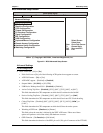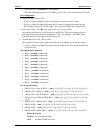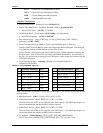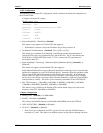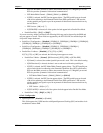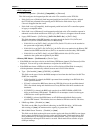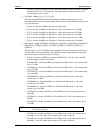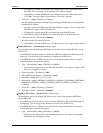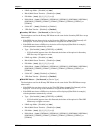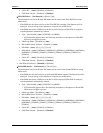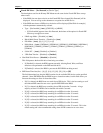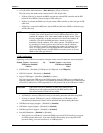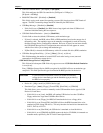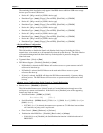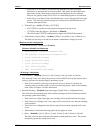
Chapter 4 BIOS Setup Utility
72 Reference Manual XTX 820
∗ If [UDMA5] is selected, the BIOS uses Ultra DMA mode 5, with a data transfer rate of
99.9 MBs. To use this mode, an 80-conductor ATA cable is required.
∗ If [UDMA6] is selected, the BIOS uses Ultra DMA mode 6, with a data transfer rate of
133.2 MBs. To use this mode, an 80-conductor ATA cable is required.
♦ S.M.A.R.T. – [Auto], [Disabled], or [Enabled]
The Self-Monitoring Analysis and Reporting Technology (SMART) feature can help predict
impending drive failures.
∗ If [Auto] is selected, the BIOS auto detects hard disk drive support. Use this setting if the
IDE disk drive support cannot be determined.
∗ If [Disabled] is selected, the BIOS is prevented from using SMART feature.
∗ If [Enabled] is selected, the BIOS uses the SMART feature on the hard disk drives.
♦ 32Bit Data Transfer – [Disabled] or [Enabled]
This field sets the 32-bit data transfer rate.
∗ If [Enabled] is selected, the BIOS uses 32-bit data transfers on the supported hard disk drive.
>Primary IDE Slave: – [Not Detected] or [Device Type]
The descriptions used for the Primary IDE Master are the same for the Primary IDE Slave except
where noted.
∗ If the BIOS does not detect a device on the Primary IDE Slave channel [Not Detected] will be
displayed. You can still go to the submenu to set options for an IDE device.
∗ If the BIOS auto detects a IDE device, the device will be displayed [Hard Disk for example]
with the parameters automatically selected.
♦ Type – [Not Installed], [Auto], [CD/DVD], or [ARMD]
∗ If [Not Installed] appears due to Not Detected, the balance of the options for Primary IDE
Slave may not appear on screen.
♦ LBA/Large Mode – [Disabled] or [Auto]
♦ Block (Multi-Sector Transfer) – [Disabled] or [Auto]
♦ PIO Mode – [Auto], [0], [1], [2], [3], or [4]
♦ DMA Mode – [Auto], [SWDMA0], [SWDMA01], [SWDMA2], [MWDMA0], [MWDMA1],
[MWDMA2], [UDMA0], [UDMA1], [UDMA2], [UDMA3], [UDMA4], [UDMA5], or
[UDMA6]
♦ S.M.A.R.T. – [Auto], [Disabled], or [Enabled]
♦ 32Bit Data Transfer – [Disabled] or [Enabled]
>Secondary IDE Master: – [Not Detected] or [Device Type]
The descriptions used for the Primary IDE Master are the same for the Secondary IDE Master
except where noted.
∗ If the BIOS does not detect a device on the Secondary IDE Master channel [Not Detected] will
be displayed. You can still go to the submenu to set options for an IDE device.
∗ If the BIOS auto detects a IDE device, the device will be displayed [Hard Disk for example]
with the parameters automatically selected.
♦ Type – [Not Installed], [Auto], [CD/DVD], or [ARMD]
∗ If [Not Installed] appears due to Not Detected, the balance of the options for Secondary
IDE Master may not appear on screen.



